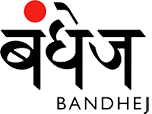
HANDCRAFTED, Sustainable Fashion
Currency

PICTORIAL TEXTILES: Ponduru
 |
 |
The traditional interlacing technique of three-shuttle weaving at Ponduru has evolved into a new art form. The same technique is used to create intricate patterns like the pictorial tapestries, which are woven on a sheer warp to create ornate sarees. Depending on the intricacy of the pattern, a saree can take anywhere from four to eight months to weave, and the weavers collectively (between the two on the loom and the bobbin maker) earn around Rs. 800 or more per day, which is substantially higher than the money earned by weavers elsewhere. No jacquards are used, and all the designs are created on a basic loom with only two paddles, by interlacing the threads, following the printed pattern on a flex sheet rolled below the warp. Two weavers sit next to each other, each manipulates the patterns within 2 feet of the 48-inch width of the saree.
 |
 |
 |
An enterprising designer and textile revivalist, Gaurang Shah, who is based in Hyderabad, has set up a workshop at the village that offers work to over 90 weavers, mostly women. Complex, theme-based pictorial imagery, often of elaborate natural scenery with trees, birds in flight, rivers, hills and clouds are printed on flex in the actual size and rolled along with the warp. The warp and running weft are in cotton and the patterns are created with multicoloured small bobbins in silk, using anywhere from 80 to 200 shades. Recently he has created replications of Ravi Verma imagery on khadi using around 600 shades in the weft. The production cost of making these textiles is very high, but Gaurang has created a niche market and is able to sustain his production. Design collaboration can help revive and rejuvenate traditional skills, give it a new direction to create fresh new products relevant for contemporary urban markets.










